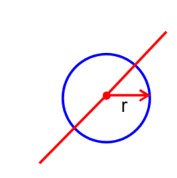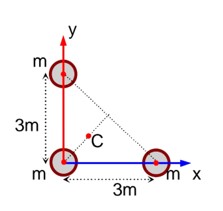Physics System of Particles and Rotational Motion
Get insights from 151 questions on Physics System of Particles and Rotational Motion, answered by students, alumni, and experts. You may also ask and answer any question you like about Physics System of Particles and Rotational Motion
Follow Ask QuestionQuestions
Discussions
Active Users
Followers
New answer posted
4 months agoContributor-Level 10
The vector product is also known as the cross product of two vectors. This results in a new vector. For all Class 11 students in Physics, one key concept of the cross product is that this resultant vector is perpendicular to the plane containing the original two vectors. The magnitude of this new vector is calculated by multiplying the magnitudes of the two initial vectors and the sine of the angle between them. The direction of the resulting vector is determined by the right-hand rule.
New answer posted
4 months agoContributor-Level 10
The product of two equal vectors depends on what type of multiplication we are using.
Dot Product: The dot product of two equal vectors is the square of the magnitude of the vector. This is because the angle between two equal vectors is 0°, and the cosine of 0° is 1.
Cross Product: The vector product or cross product of two equal vectors is a zero vector (or null vector). This is because the angle between the vectors is zero, and the sine of 0° is 0.
New answer posted
4 months agoContributor-Level 10
The dot product of a vector with itself is the magnitude's square. When we multiply a vector by itself using the dot product, the angle between them is always zero. That's because the cosine of a 0° angle is 1. The dot product simplifies to the product of the magnitudes of the two vectors. And, in this case, it is the magnitude of the vector that is multiplied by itself. This operation results in a scalar quantity.
New answer posted
4 months agoContributor-Level 10
Motion of centre of mass has various applications in the real world. It is used for designing stable structures and vehicles, where low centre of mass make them more stable and faster. Even the motion of centre of mass applies to sportspeople, where athletes manipulate their centre of mass to optimise their performance. Apart from that, motion of centre of mass is required in animation and computer graphics to create realistic animations.
New answer posted
4 months agoContributor-Level 10
The motion of individual particles relative to the centre of mass shows us how the particles move with respect to this central point. You can consider a frame of reference that moves along with the centre of mass. In this frame, the total momentum of all the particles in the system is nil or zero.
New answer posted
4 months agoContributor-Level 10
The centre of mass moves as if all mass of the object is concentrated at one point while all external forces act on it. The motion of the centre of mass follows Newton's Second Law of Motion. That means that you can multiply the total mass of the system with the acceleration, which equals the net total force. The particles within the system have cancelled out internal forces, and do not affect the motion of the centre of mass.
New answer posted
4 months agoContributor-Level 10
You should know that when the shift in the centre of mass occurs, you can use the principle of moments. With this logic, we can see the shift from the original body as the combination of two parts. The one that remains part and the other that is removed. The formula for the shift is the product of the mass removed and its distance of its centre of mass from the original centre of mass, which is divided by the mass of the remaining part.
New answer posted
4 months agoContributor-Level 10
To study centre of mass, you need to follow these steps.
- Learn the definition with examples. Most importantly, focus on visualising it.
- Then approach the centre of mass formulas for discrete particles and continuous bodies.
- Practice finding the centre of mass for symmetrical and asymmetrical bodies.
- Solve problems on the motion of centre of mass and its applications in collisions of particles.
Taking an Exam? Selecting a College?
Get authentic answers from experts, students and alumni that you won't find anywhere else
Sign Up on ShikshaOn Shiksha, get access to
- 66k Colleges
- 1.2k Exams
- 680k Reviews
- 1800k Answers


